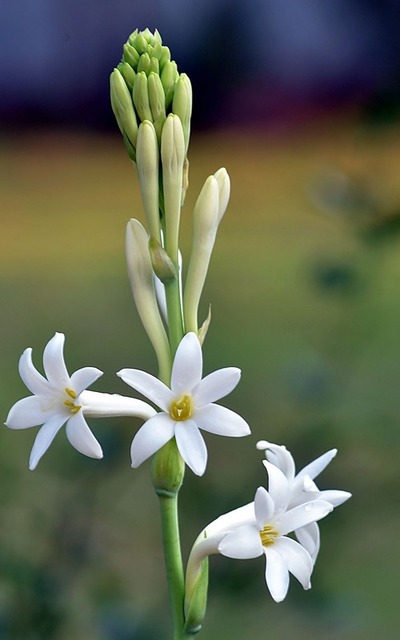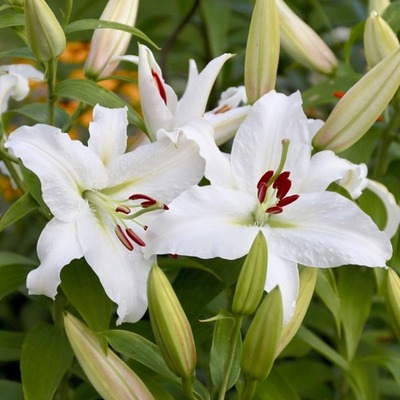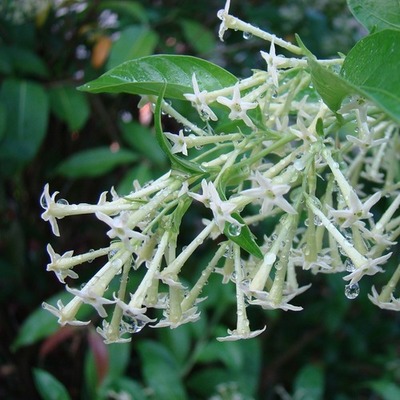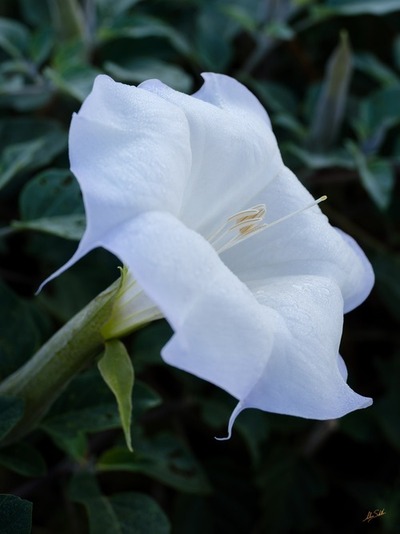When the sun sets and most flowers close their petals for the day, a different kind of beauty awakens in the garden. Night-blooming flowers, with their luminous blossoms and enchanting fragrances, can transform your evening space into a serene, magical haven. These flowers attract nocturnal pollinators like moths and bats, enhancing the biodiversity of your garden. If you’re looking to add some evening charm to your garden, here are 12 stunning night-blooming flowers that will thrive in various settings.
1. Moonflower (Ipomoea alba)
 As its name suggests, the moonflower blooms under the moonlit sky, unfurling its large, white blossoms at dusk. The plant is a fast-growing vine, perfect for trellises or fences. Its trumpet-shaped flowers, which can reach up to six inches in diameter, emit a lovely fragrance that lingers through the night. Moonflowers thrive in warm climates and need full sun during the day to produce abundant blooms.
As its name suggests, the moonflower blooms under the moonlit sky, unfurling its large, white blossoms at dusk. The plant is a fast-growing vine, perfect for trellises or fences. Its trumpet-shaped flowers, which can reach up to six inches in diameter, emit a lovely fragrance that lingers through the night. Moonflowers thrive in warm climates and need full sun during the day to produce abundant blooms.
2. Evening Primrose (Oenothera biennis)
 Evening primrose is a hardy perennial known for its bright yellow blooms that open at twilight. These cheerful flowers are not only visually stunning but also attract beneficial pollinators such as moths and bees. Evening primrose is easy to grow and requires minimal care, making it a great option for beginner gardeners. It thrives in well-draining soil and full sun.
Evening primrose is a hardy perennial known for its bright yellow blooms that open at twilight. These cheerful flowers are not only visually stunning but also attract beneficial pollinators such as moths and bees. Evening primrose is easy to grow and requires minimal care, making it a great option for beginner gardeners. It thrives in well-draining soil and full sun.
3. Night Phlox (Zaluzianskya capensis)

Night phlox, also known as “Midnight Candy,” gets its nickname from its sweet, vanilla-like scent that intensifies after dark. Its white and purple flowers create a stunning display in the moonlight. This plant is ideal for borders or containers and can thrive in both full sun and partial shade. Night phlox is a magnet for moths, making it a wonderful addition to a pollinator-friendly garden.
4. Tuberose (Polianthes tuberosa)

Tuberose is revered for its heavenly fragrance, which is most intense during the evening hours. Its creamy white flowers bloom on tall spikes and make a striking statement in any garden. Native to Mexico, tuberose prefers warm climates and needs well-draining soil and plenty of sunlight during the day. Its scent is so captivating that it’s often used in perfumes.
5. Four O’Clock (Mirabilis jalapa)

Named for the time of day when its flowers open, the Four O’Clock plant produces vibrant blooms in shades of pink, red, yellow, and white. These flowers are unique in that multiple colors can appear on the same plant. Once open, they emit a subtle fragrance and attract evening pollinators like moths. This drought-tolerant plant is easy to grow and can thrive in a variety of soil conditions.
6. Queen of the Night (Epiphyllum oxypetalum)

Queen of the Night is a true spectacle, known for its large, fragrant flowers that only bloom for one night. This cactus produces dramatic white blossoms that can grow up to 12 inches in diameter. While it’s a slow-growing plant, the wait is worth it for the incredible display when it finally blooms. Queen of the Night prefers a humid environment and indirect sunlight, making it perfect for tropical or indoor gardens.
7. Night Gladiolus (Gladiolus tristis)

With its pale yellow blooms and spicy, clove-like fragrance, the Night Gladiolus adds elegance and sophistication to any garden. While it’s called “Night Gladiolus,” the flowers also open during the day but release their most potent fragrance in the evening. This plant prefers full sun and well-draining soil and can be an eye-catching addition to flower beds or borders.
8. Casablanca Lily (Lilium ‘Casablanca’)

Casablanca lilies are famous for their pure white, star-shaped flowers and intoxicating fragrance that intensifies at night. These majestic blooms are perfect for a moonlit garden, creating a sense of elegance and drama. Casablanca lilies thrive in well-draining soil and prefer a sunny spot with some afternoon shade. They also make excellent cut flowers, filling your home with their rich scent.
9. Brugmansia (Brugmansia spp.)

Also known as Angel’s Trumpet, Brugmansia produces large, trumpet-shaped flowers that dangle elegantly from its branches. These fragrant blooms open at dusk and release a heady, sweet scent throughout the night. While Brugmansia can be grown in containers, it does best as a small tree or shrub in warm climates. Be cautious, as all parts of the plant are toxic if ingested.
10. Night-Blooming Jasmine (Cestrum nocturnum)

Night-blooming jasmine is famous for its intense fragrance, which is most potent after the sun goes down. This evergreen shrub produces clusters of small, tubular white flowers that attract night pollinators. While its flowers are small, the plant’s strong scent can fill an entire garden. Night-blooming jasmine grows best in warm, tropical climates and prefers full to partial sun.
11. Datura (Datura spp.)

Datura, sometimes called “Devil’s Trumpet,” produces large, trumpet-shaped flowers that open at dusk. The blooms can be white, purple, or yellow, and they exude a powerful fragrance that attracts nocturnal pollinators. Datura is a striking plant that can grow into a large shrub, making it perfect for a focal point in your garden. However, like Brugmansia, it is toxic, so handle it with care.
12. Evening Stock (Matthiola longipetala)

Evening stock is a charming and delicate annual with pale pink or white flowers that emit a sweet, clove-like fragrance after dusk. This low-growing plant is perfect for borders, window boxes, or containers, and its scent is strong enough to fill a garden on warm nights. Evening stock thrives in full sun and well-draining soil and is a wonderful addition to any fragrant night garden.
Tips for Growing Night-Blooming Flowers
To create a successful night garden, it’s important to consider the following tips:
- Choose the Right Location: Most night-blooming flowers still need full sun or partial shade during the day to thrive. Select a spot in your garden that receives ample sunlight.
- Prepare the Soil: Ensure your soil is well-draining, as many of these plants are susceptible to root rot in waterlogged soil. Adding compost or organic matter can improve drainage and soil fertility.
- Watering Needs: While some night-blooming flowers are drought-tolerant, others require regular watering. Be sure to research the specific needs of each plant.
- Scent and Pollinators: Many night-blooming flowers emit strong fragrances to attract nocturnal pollinators like moths. Plant these flowers near seating areas or windows to enjoy their perfume.